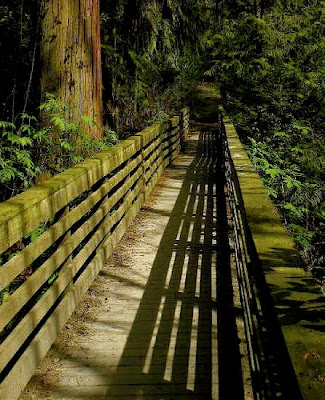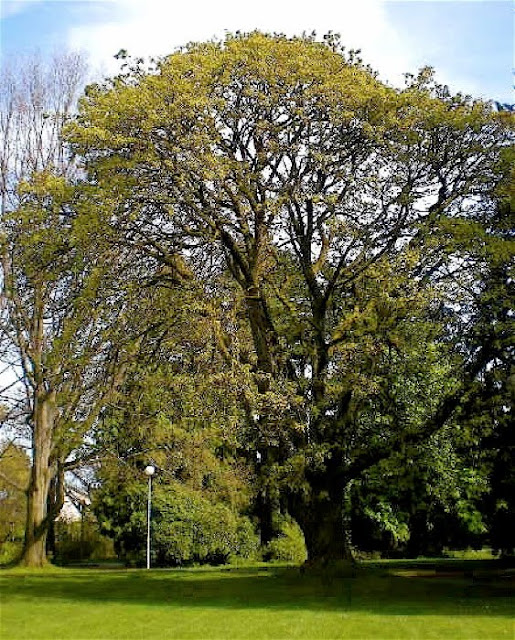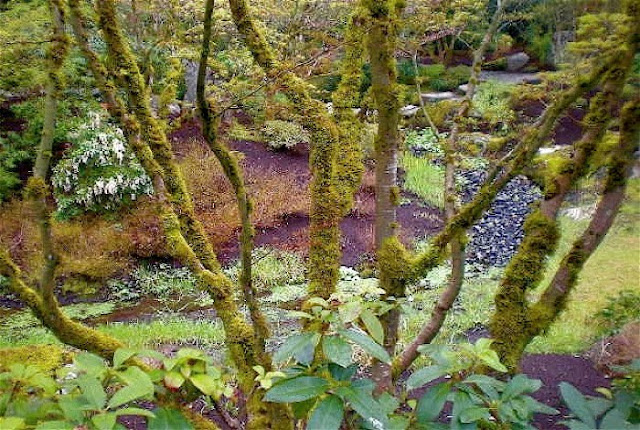Denny Blaine Lake Park Shelter April 2010
Denny Blaine Lake Park April 2010
Denny Blaine Lake Park April 2010
Denny Blaine Lake Park April 2010
This small park in
Madrona is perhaps Seattle's most beautiful bus stop. The 0.19 acre
Denny Blaine Lake Park contains a rustic Craftsman shelter built in 1901. The remainder of the park is almost entirely occupied by a fairly large pond filled with waterlilies. I have driven by the park many times, but never stopped. In truth, you can see it all from Madrona Drive. But the shelter merits closer inspection. I would never have guessed that the pond was inhabited by at least 1 turtle, if I hadn't stopped to look. You can find the park on Madrona Drive between Madrona Place & Maiden Lane. Make it part of a pleasant walk or ride between the Madrona business district on 34th Avenue at Union Street &
Madrona Park where Madrona Drive ends at Lake Washington Boulevard. Take the
2 Madrona Park bus from Downtown Seattle or 1st Hill.
Here is a history of the park & the
Denny Blaine Lake Park Shelter from the City of Seattle Department of Neighborhoods: This architecturally distinctive structure was initially constructed about 1901 to serve as an office for the Denny-Blaine Land Company. In 1901, real estate developers Charles L. Denny and Elbert F. Blaine filed a plat for their Denny-Blaine Lake Park subdivision and constructed this building along the route of the streetcar line. Some ten years earlier, a company headed by J.D. Lowman had established an electric trolley line, first called the Union Trunk Line, and had developed
Madrona Park along the shores of Lake Washington at its terminus. Denny and Blaine owned a large parcel of land at the top of the ravine through which the streetcar ran on its way down to the lake. Once they filed their plat, they constructed this building as an office from which to conduct real estate sales. The building also featured a waiting room for passengers of the streetcar line. Denny and Blaine apparently constructed the building so that it could be converted for use as a waiting and picnic shelter after it was no longer necessary to use it as a real estate office. The structure shared an irregular parcel of land with a small park containing a pool. Denny and Blaine had dedicated and developed the park as part of their plat. After the realty office had ceased to function as such, it reverted to its intended use as a waiting shelter. Initially, the windows, doors and interior walls remained. However, by 1924, problems with vandalism made it necessary to remove all of these features, leaving an open, roofed shelter with the DENNY BLAINE LAKE PARK sign still on the roof. This structure is significant for its design and for its associations with one of Seattle’s earliest modes of mass public transportation, the streetcar lines, and with the development of the Madrona/Denny Blaine neighborhood.





































































































